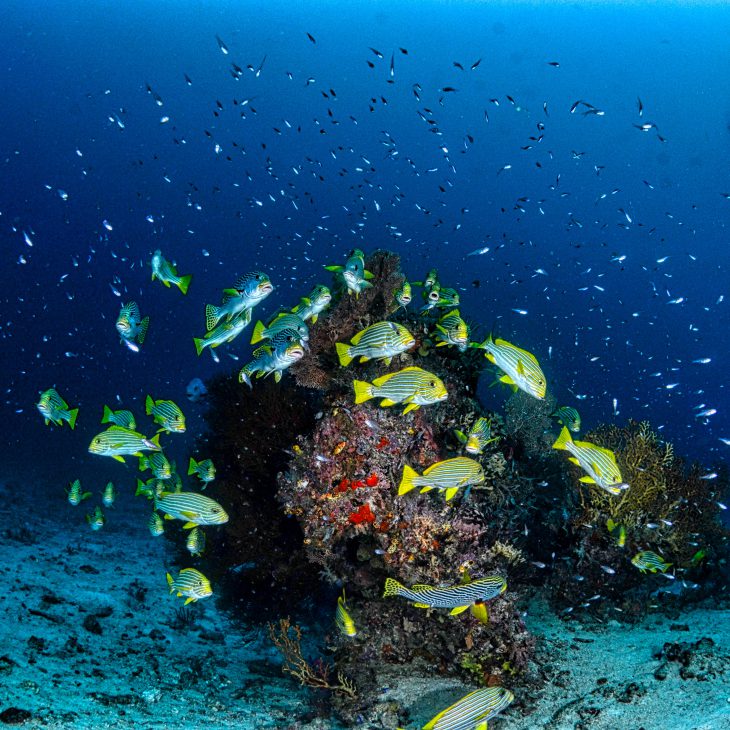As temperatures increase all over the world, certain animals are expected to respond in certain ways. For example, cold-blooded animals are expected to decrease in size based on many previous experiments. Natural ecosystems rarely respond in such a straightforward manner, so it’s important to see how animals are changing in their natural habitats.
The effects of warming are greater on aquatic animals: the average weight of 169 aquatic species decreased by 5% when the temperature increased one degree Celcius while terrestrial animals decreased by only 0.5%. This demonstrates the importance of understanding the effect of ocean warming on fish and sharks because a small amount of warming could greatly affect the function of ecosystems that humans depend on for food and recreation.
Researchers at the University of Tasmania and Trinity College used data gathered by divers to determine how the average size of fish is changing. To collect this data, divers lay down grids on the bottom of the reef and document the species of fish present, the number of each fish, and their size. These datasets span 26 years and include over 30,000 surveys.
The researchers then made decisions about which species to include based on their distribution, how often they were seen, and over how many years they were present, ending up with 335 species of fish and sharks to analyze. One unique thing about this dataset is that 254 of those species are not commonly caught by fishermen. Fishing has a known impact on fish size, where fish that are frequently caught decrease in size over time due to fishermen removing the largest ones. Having many species unaffected by fishing in the data set means that the effects of temperature will be more clear.
The researchers looked at spatial temperature differences versus fish size first, meaning they compared the sizes of fish living at the same time in different locations. They found that about half of the species changed significantly in size in the warmest waters they lived in, compared to their average size in a more comfortable temperature. Ninety-seven species decreased in size, but 64 species increased in size in warmer waters. An interesting pattern they found was that, in warmer areas, the larger species were larger than their average size and the smaller fish were smaller than average.
The researchers then looked at changes in fish size over time as waters have warmed. They analyzed data on 77 species at nine sites that have been monitored for at least 15 years. Forty of those species have been changing in size over time and 36 of those 40 showed the same pattern, either shrinking or growing larger, at all locations. Fish that were smaller on the warmer edges of their habitat also got smaller in areas that got warmer over time, and the same pattern was observed in fish that were larger in warmer areas. In the species that were consistently changing, the changes were relatively large, averaging a 1% change in length per year. In comparison, the effects of fishing are estimated to be 0.5-4% per year, but only affect fish that are commonly fished.
Many of these effects are unexpected or stronger than previously estimated. In laboratory experiments, large fish grew up to be smaller than average when raised in warmer water than their normal habitat. Scientists thought this was because the warmer water did not hold enough oxygen for a large fish to survive in, since warm waters hold less gas. This study showed, however, that around Tasmania, larger species tended to increase in size as it got warmer. This means that there must be more to the changes than just basic chemistry.
These results have important implications for the future of ocean ecosystems. This pattern of larger species getting larger and smaller species getting smaller means that predators may increase in size and their prey may decrease, which could lead to decreasing predator populations. Based on previous data, a decrease in fish body size as small as 4% over 50 years can potentially lead to a 30% decrease in biomass, and the size changes in this study were larger than that. Further studies are needed to find the mechanisms that drive these different size changes, which can help predict how our oceans will change in the near future.


